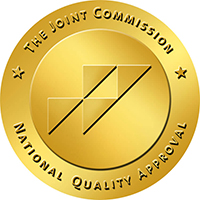Persistent Depressive Disorder (Dysthymia)

About Persistent Depressive Disorder
Depression can look different for every person it touches. Some people have felt depressed for so long that they can barely remember a time when they didn’t feel depressed. When a person experiences consistent feelings of sadness or lowness for two years or longer, it is often called Persistent Depressive Disorder, or Dysthymia.
The key factor in diagnosing Dysthmia, or Persistent Depressive Disorder, is in the persistence of the low feelings. While clinical depression is more episodic, individuals diagnosed with Dysthmia go in and out of depressive moods for years and struggle with a constant cloud of pessimism hovering over them. The long duration of these symptoms can often make individuals feel as though a depressed, pessimistic mood is just part of who they are.
Symptoms of Persistent Depressive Disorder (Dysthymia):
Dysthmia shares the same symptoms as Major Depressive Disorder:
- Going in and out of sadness and hopelessness
- Irritable mood
- Trouble focusing and making decisions
- Bouts of insomnia or sleeping too much
- Low self-esteem
- Low energy and general disinterest in life
Why There Is Hope for Dysthymia
Just as in cases of Major Depressive Disorder, Dysthmia can be managed and even overcome. A custom treatment plan that caters to the specific case of Dysthmia and its persistent, deep-rooted causes has very optimistic results in reducing the intensity of symptoms, shortening the duration of episodes, and even erasing them altogether.
Helping a Loved One with Dysthymia – Early Intervention for Persistent Depressive Disorder
Dysthmia can arise from childhood and early trauma. Family members and friends are encouraged to look out for the signs of any form of depression and reach out to loved ones who may be at risk. Dysthmia has a high rate of morphing into a more serious case of Major Depressive Disorder if left untreated. An early intervention can save the life of someone you love who may be going through it. Checking in with loved ones and letting them know they have support can make all the difference.
How We Treat Persistent Depressive Disorder
Treatment of Dysthymia depends on the source of the depression. If the individual has experienced extreme loss or some other form of trauma, therapy can be beneficial in sorting out thoughts and emotions. Personal therapy can help depressed individuals talk through their feelings, stressors and negative thoughts and redirect them into more productive inner conversation and behaviors. Family therapy can be beneficial when members of the affected person’s family play a role in the source of the trauma or stress. Many people diagnosed with Dysthmia have accepted that a constant feeling of hopelessness and lethargy is just part of life, so it’s important for clinicians to educate them about depression and let them know they are not alone.
Antidepressant medications and integrative treatments can significantly reduce mood symptoms, and have shown success when administered in a well-managed treatment plan overseen by a medical provider.
What Ongoing Care Looks Like for Dysthymia
Finding treatment that works specifically for you is essential for long-term success after being diagnosed with any form of depression. Even after a person feels they have been cured, it’s important to maintain a healthy aftercare plan that may include continuing education, therapy and healthy lifestyle adjustments to maximize good health. With diligence and support from loved ones and professionals, dysthymia can be silenced and those who once lived in a never-ending shadow can again find the light.
Symptoms of Persistent Depressive Disorder (Dysthymia):
Dysthmia shares the same symptoms as Major Depressive Disorder:
- Going in and out of sadness and hopelessness
- Irritable mood
- Trouble focusing and making decisions
- Bouts of insomnia or sleeping too much
- Low self-esteem
- Low energy and general disinterest in life




